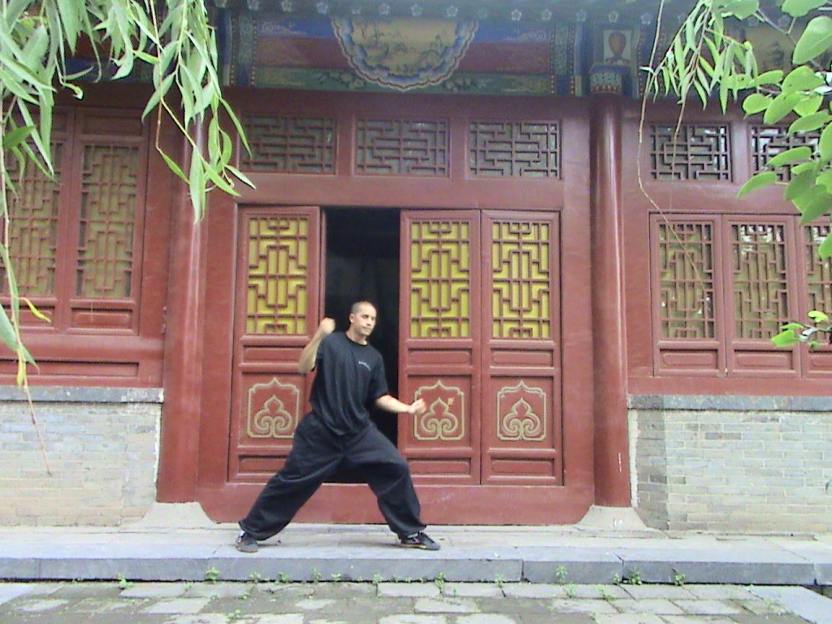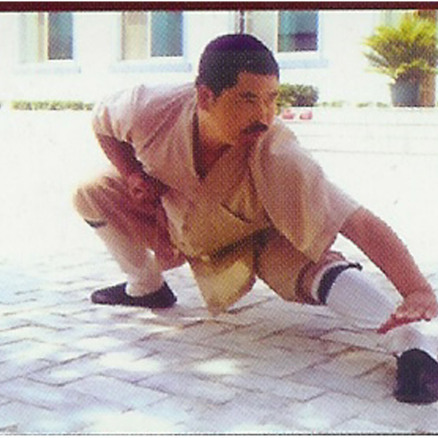少林寺
During the Summer of 2007 I made a pilgrimage deep into rural China that would change my life forever. The Shaolin Temple is considered, by most traditional kung fu practitioners, to be the “Mecca” for kung fu. Growing up in the 80s, I used to (and still) marvel at the fight scenes in kung fu movies and knew one day that was something I wanted to do. Those movies exposed me to mythical ideas of drunken mantis fist, wu-tang sword style, and Shaolin buddha palm. A lot of the characters in those movies would travel to the Shaolin Temple to become a master.
Before my journey to China, the only exposure I had to Chinese culture were my visits to Chinatown in Oakland and San Francisco. Everything else came from what I picked up from my studies. Not deterred by the obvious language barrier, I enrolled in Mandarin at the college level which helped a lot. While, I had been practicing and training in the Shaolin system one and a half years prior to my journey, nothing would prepare me for what awaited me in Henan Province.

His name is Lu Hai Long (Shi Yong Kan). He is my teacher’s teacher and a 33rd Generation Shaolin Warrior Monk. Shaolin Warrior Monks have a long and battle tested history in China. They protected the Emperor from insurgents and tenaciously defended the temple from invading marauders.
Over time, Warrior Monks were permitted to live secular lives and take on disciples. Not all monks were there to study Chan Buddhism, but the martial monks were indoctrinated with Chan buddhist ideology through martial forms of Shaolin.
The Path to my eventual discipleship began in January of 2006. I had already been practicing a southern style of kung fu known as Choy Li Fut 4 years prior. Until I learned of a Shaolin school that had recently opened up in Reno, NV, where I was living at the time. This is where I met my teacher, Shi Yan Xin – a 34th Generation Shaolin Secular Disciple.
He accepted me as a student and I began my training. Shaolin Quan (Shaolin Boxing) is not like any martial art I have ever encountered. It’s very demanding on the body. Its unforgiving and short cuts lead to injury. However, the benefits are unexplainable in that the more you practice the more you begin to understand life, spiritualism, and balance.
The turn over rate for the school I was at was about a month. Meaning, on average a new student would try it out for about a month and then quit. There were only a handful of students that came in regularly. This was nice because the classes weren’t full and the training was more like individual lessons. Lots of one-on-one learning opportunities.
I had advanced through the first level curriculum within a ten month period. Generally speaking, it usually takes two years. I loved learning kung fu.
In Shaolin there is no belt system, but first level usually equates to a beginner’s black belt in Tae Kwon Do or Karate. While training in this system, I could feel the traditional physical aspects that have been passed on from master to student for generations. Punching wooden posts, slapping hands over bean bags, pop-ups from the ground. Learning to fall on my back, fall on my sides, fall on my arms. What I was putting my body through was intense. Things I could only imagine or have seen in those old kung fu flicks… I was doing that!

By This Time, the Shaolin Temple had been closed to teaching kung fu by the masses on monastery grounds. Open to just a handful of students and resident monks. There are dozens of schools in the surrounding area of the temple where both Warrior monks and former students run their own programs.
I trained at a school just down the road from the temple at the Shaolin Shui Ku Xue Xiao – The School at the Shaolin Dam. In China, most adults view kung fu like adults view soccer here in the United States. Something that kids do until they’re about 12 years old and that’s it. Not something to pursue at the professional level.

I was prepared for the training regiment in China because of the way I trained back in the U.S. Everything from holding and throwing around training locks, core and leg training, hours of practice, to cardio exercises and running. Although, I wasn’t prepared for climbing up an entire dam in a reversed spider crawl. The school was known for this. I will never forget the grueling pain I endured. When I say I was tested, I really was at a breaking point. I’d be lying if I said I didn’t consider giving up on that dam.
I kept on pushing. I definitely didn’t want to be viewed as the lazy American just picking and choosing when I felt like training.
I think we all have that moment where we feel it’s just easier to give up on something so we don’t have to feel pain or hurt anymore. I realize that there are a lot of things not worth holding onto. When it comes to dreams and aspirations, things that are attainable over time, NEVER give up.

For As Long As I can remember, I always wanted to learn kung fu. Watching old school kung fu movies on the USA Network back in the day. Since those days I have lost and found that desire to learn it. For me, kung fu and most traditional martial arts hold a majestic level of respect and mystique. Having an opportunity to train in the arts is a gift I don’t take for granted.
Today I hold the official title of 35th Generation Shaolin Secular Disciple. I specialize in Shaolin Staff. My temple name is Shi Heng Lu under the tutelage of Shi Yan Xin and Shi Yong Kan. I still practice, but more so the spiritual aspects of Shaolin.





Shaolin Kung Fu is only one aspect of the entire Shaolin culture. A culture that encapsulates philosophy, spirituality, martial arts, and overall well-being. While it has been popularized by Hollywood and Hong Kong cinema, understand that Shaolin kung fu is not for those seeking to attain any kind of material wealth, belts, or prize. The reward for training in Shaolin is self-respect, self-defense, self-preservation, spirituality, health & wellness. And that’s just scratching the surface. If you are interested in learning traditional martial arts, I suggest doing some research to see what inspires you. Be diligent in finding what fits your character and style because most martial arts schools aren’t one size fits all.
Original Post Dec. 1, 2009 on reyronin.wordpress.com. Revised Jan. 18, 2021.




